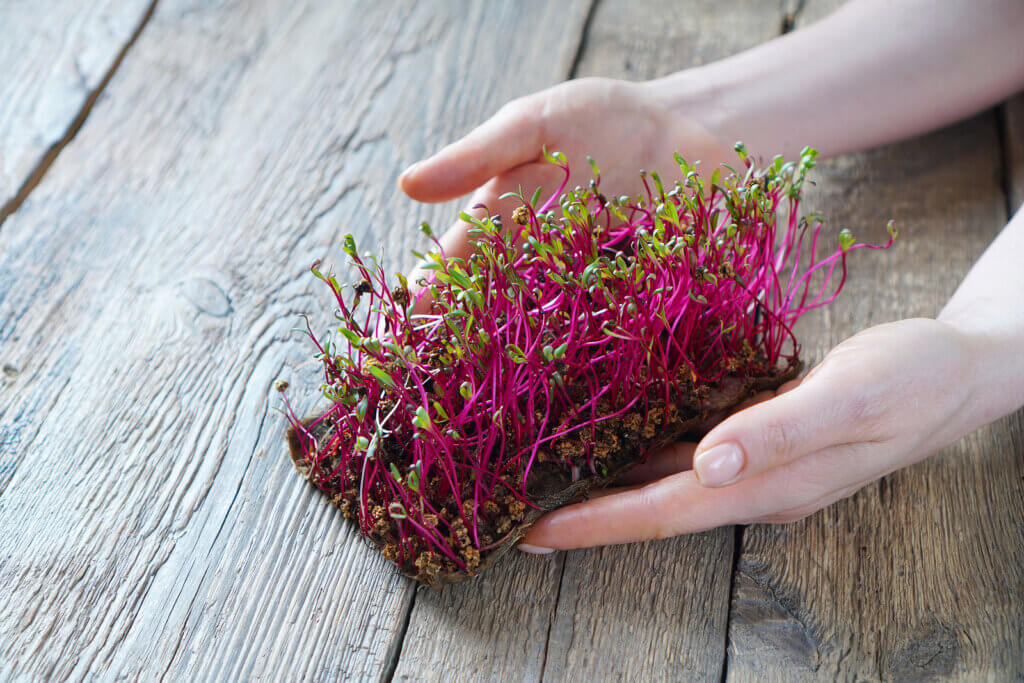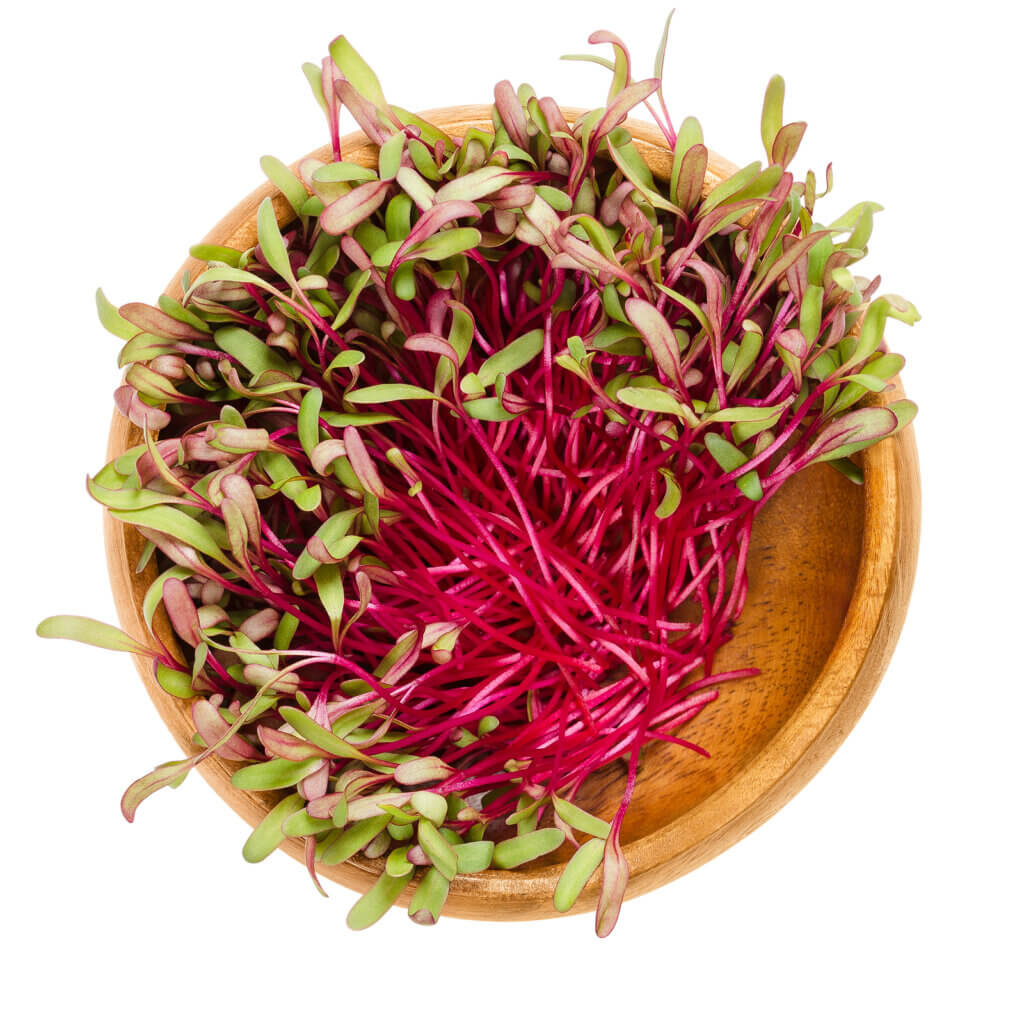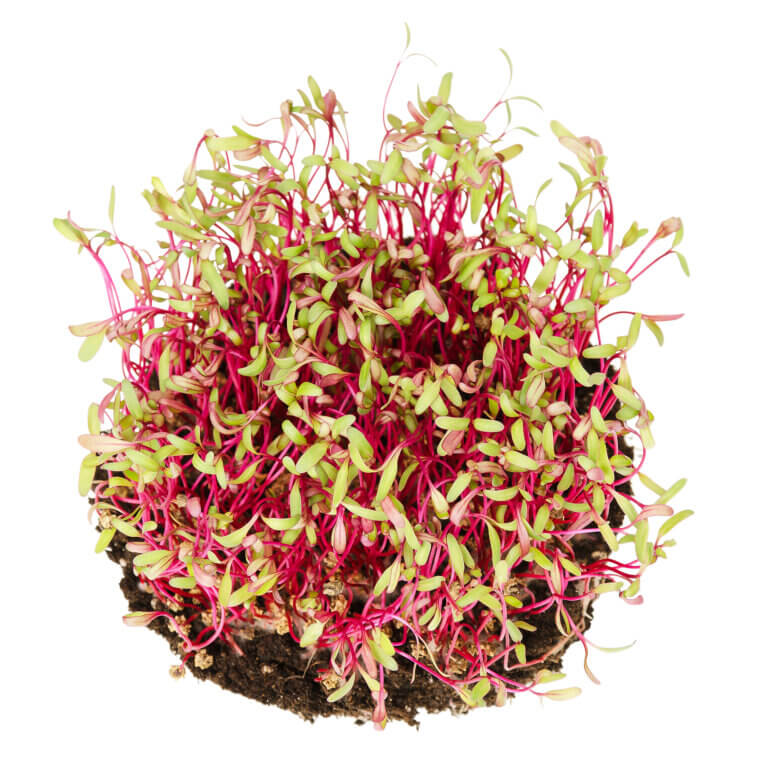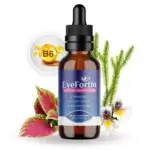Table of Contents
In recent years, the world of nutrition has been abuzz with the emergence of a remarkable superfood – beetroot microgreens. These tiny, vibrant green leaves have gained immense popularity for their impressive nutritional value and culinary versatility. This comprehensive guide is your key to understanding the captivating realm of beetroot microgreens.
We will explore their origins, delve deep into their nutritional benefits, investigate the cultivation process, uncover creative ways to incorporate them into your diet, discuss their multitude of health advantages, share tantalizing recipes, and guide you on where to find these incredible greens. By the end of this article, you will have gained a profound appreciation for the wonders of beetroot microgreens.
Exploring the Universe of Beetroot Bicrogreens
Beetroot microgreens offer a captivating glimpse into the realms of both cuisine and nutrition. These delicate, vibrant greens are the nascent sprouts of the beetroot plant (Beta vulgaris) and are harvested when they are only 10 to 14 days old, just as their first true leaves begin to unfurl.
While the mature beetroot is commonly valued for its robust root, beetroot microgreens are prized for their tender, flavorful, and nutrition-packed leaves. These miniature wonders not only add a burst of color and taste to dishes but also deliver a plethora of health benefits.
What are beet microgreens?
Beet microgreens are the tender, young seedlings of the beetroot plant, scientifically known as Beta vulgaris. These diminutive greens are harvested at an early stage, typically between 10 to 14 days after germination, just as they begin to develop their first true leaves.
Unlike mature beetroot, which is primarily cultivated for its nutrient-rich root, beet microgreens are prized for their delicate, flavorful foliage. These microgreens boast vibrant green leaves with a reddish stem, and they are characterized by a mild yet slightly earthy taste with a subtle hint of beetroot's signature sweetness.
Beet microgreens are celebrated for their exceptional nutritional density. They are rich in vitamins, particularly vitamin A, vitamin C, and vitamin K, which support various aspects of health, from bolstering the immune system to promoting healthy vision and aiding in blood clotting. Additionally, these microgreens contain essential minerals like potassium, calcium, and iron, contributing to functions such as regulating blood pressure, strengthening bones, and facilitating oxygen transport in the body.
Their standout feature, however, lies in the presence of betalain antioxidants, which are known for their potential to reduce inflammation, protect against oxidative stress, and potentially mitigate the risk of chronic diseases. Overall, beet microgreens offer a delightful combination of flavor and nutrition, making them a valuable addition to a health-conscious diet.

Nutritional Powerhouse: A Comprehensive Analysis of Nutrients
The allure of beetroot microgreens lies in their extraordinary nutritional profile. Let's embark on an exhaustive exploration of the critical nutrients that make them a genuine superfood:
Vitamins
Beetroot microgreens are brimming with essential vitamins. Vitamin A, abundant in these greens, plays a pivotal role in maintaining healthy vision. Simultaneously, vitamin C fortifies the immune system and supports collagen synthesis. Vitamin K, another significant component, is essential for blood clotting and bone health.
Minerals
The mineral content of beetroot microgreens is impressive, featuring notable amounts of potassium, calcium, and iron. Potassium assists in regulating blood pressure, calcium contributes to strong bones, and iron is vital for efficient oxygen transport within the body.
Antioxidants
One of the most remarkable aspects of beetroot microgreens is the presence of betalain antioxidants. These unique compounds are associated with potent anti-inflammatory properties, protection against oxidative stress, and the potential to reduce the risk of chronic diseases.
Fiber
Dietary fiber is a standout feature of beetroot microgreens. This fiber aids in promoting optimal digestion, managing cholesterol levels, and instilling a sense of satiety, which can aid in weight management.
Folate
Folate, also known as vitamin B9, is crucial for DNA synthesis and repair. Beetroot microgreens provide a valuable source of folate, making them an excellent choice for supporting overall health.
How to Grow Beet Microgreens: Step-by-Step Guide
One of the most exciting aspects of beetroot microgreens is their accessibility for home cultivation. Whether you're a seasoned gardener or a complete novice, growing these nutritious greens at home is a rewarding and straightforward endeavor. Here's a comprehensive, step-by-step guide to get you started:
- Seed Selection: Commence your journey by selecting high-quality beetroot microgreens seeds. Look for reputable seed suppliers that offer organic, non-GMO seeds to ensure optimal growth and nutrient content.
- Growing Medium: Beetroot microgreens can be cultivated in soil or hydroponically. If opting for soil, choose a well-draining potting mix. For hydroponics, consider utilizing a hydroponic growing medium to provide the essential nutrients.
- Sowing Seeds: Evenly distribute the beetroot microgreens seeds across the chosen growing medium. While it's important to sow the seeds densely, avoid overcrowding to facilitate proper air circulation.
- Light and Temperature: Ensure that your seed tray or growing container receives an adequate amount of sunlight. In cases where natural light is insufficient, consider using grow lights to maintain optimal growth conditions. Maintaining a consistent temperature of around 70°F (21°C) is crucial for the successful growth of beetroot microgreens.
- Watering: Maintain consistent moisture levels in the growing medium, taking care not to oversaturate it. A spray bottle can be a handy tool for gentle misting, ensuring that the seeds remain adequately hydrated during germination and growth.
- Harvesting: Beetroot microgreens are ready for harvest in approximately 10 to 14 days when they reach a height of 2 to 3 inches. To harvest, use clean scissors or shears to snip the greens just above the soil level.
Check out our post on LED Grow Lights for Microgreens
Incorporating Beetroot Microgreens into Your Culinary Repertoire
Having successfully cultivated beetroot microgreens, it's time to explore the multitude of ways to incorporate these vibrant greens into your daily culinary endeavors. Here's an extensive look at creative and practical ways to enjoy beetroot microgreens:
Salads
Enhance the flavor, texture, and nutritional profile of your salads by incorporating a generous handful of beetroot microgreens. Their mildly peppery and earthy flavor adds depth to your salad creations, while their vibrant colors make them visually appealing.
Sandwiches and Wraps
Transform ordinary sandwiches and wraps into gourmet delights by layering them with beetroot microgreens. These greens not only provide a delightful textural contrast but also infuse your sandwiches with a burst of nutrients and flavor.
Smoothies
Elevate your morning or post-workout smoothies by blending beetroot microgreens into the mix. Their addition introduces a wealth of vitamins and minerals that can boost your overall well-being and invigorate your palate.
Garnishes
Elevate your culinary presentations by using beetroot microgreens as vibrant garnishes. Sprinkle them atop soups, omelets, or any dish in need of both a visually striking and nutritionally beneficial finishing touch.
Stir-Fries
Liven up your stir-fry recipes by adding beetroot microgreens just before serving. Their vivid colors and unique flavor profile can transform your dishes into culinary masterpieces.
Unraveling the Beet Microgreens Benefits
The consumption of Beet Microgreens Benefits is associated with a wide range of health benefits. Let's delve deeper into the significant advantages they offer to your overall well-being:
Heart Health
The high potassium content in beetroot microgreens plays a pivotal role in maintaining healthy blood pressure levels. Regular consumption can contribute to a reduced risk of cardiovascular diseases.
Anti-Inflammatory
Betalain antioxidants, found abundantly in beetroot microgreens, exhibit potent anti-inflammatory properties. Incorporating these greens into your diet may help reduce the risk of chronic inflammatory conditions and promote overall wellness.
Digestive Health
The substantial fiber content in beetroot microgreens is a boon for digestive health. It promotes optimal digestion, aids in maintaining healthy cholesterol levels, and instills a sense of fullness, which can be beneficial for weight management.
Weight Management
Dietary fiber is a key component in weight management, as it creates a feeling of satiety, reducing the likelihood of overeating. Beetroot microgreens, with their fiber-rich content, can be an excellent addition to the diets of those looking to manage their weight.
Immune Support
The abundance of vitamin C in beetroot microgreens is instrumental in fortifying the immune system. Regular consumption can enhance the body's ability to ward off infections and illnesses, particularly during cold and flu seasons.

Delectable Beetroot Microgreens Recipes to Savor
To inspire your culinary journey with beetroot microgreens, we present two tantalizing and detailed recipes that will tantalize your taste buds and make the most of these nutritious greens:
Beetroot Microgreens and Goat Cheese Salad
Ingredients:
- 1 cup beetroot microgreens
- 4 oz goat cheese
- 1/4 cup toasted walnuts
- 2 tbsp balsamic vinegar
- 2 tbsp extra-virgin olive oil
- Salt and freshly ground black pepper to taste
Instructions:
- In a large salad bowl, combine the vibrant beetroot microgreens, crumbled goat cheese, and toasted walnuts. The combination of textures and flavors will delight your palate.
- In a separate bowl, whisk together the balsamic vinegar and extra-virgin olive oil. Season the dressing with a pinch of salt and a dash of freshly ground black pepper for a harmonious balance of flavors.
- Drizzle the luscious dressing over the salad mixture and gently toss to ensure even distribution. The dressing will enhance the earthy undertones of the microgreens and provide a satisfying contrast to the creamy goat cheese and crunchy walnuts.
- Serve the Beetroot Microgreens and Goat Cheese Salad immediately, relishing the delightful harmony of flavors and textures that this dish offers.
Beetroot Microgreens Smoothie
Ingredients:
- 1 cup beetroot microgreens
- 1 ripe banana
- 1/2 cup frozen mixed berries
- 1 cup almond milk
- 1 tbsp honey (optional, for added sweetness)
Instructions:
- Gather the vibrant ingredients for your Beetroot Microgreens Smoothie. You'll need a cup of fresh beetroot microgreens, one ripe banana, a half-cup of frozen mixed berries, one cup of almond milk, and a tablespoon of honey (if you desire a touch of sweetness).
- Place all the ingredients into a reliable blender. Begin by adding the fresh beetroot microgreens as your base. Microgreens are incredibly nutrient-dense, and this smoothie is an excellent way to harness their health benefits.
- Next, add the ripe banana for creaminess and natural sweetness. The banana also contributes potassium, adding to the nutritional value of your smoothie.
- Follow up with the frozen mixed berries. Berries are packed with antioxidants and will infuse your smoothie with a burst of flavor and color.
- Pour in a cup of almond milk to achieve the desired consistency. Almond milk provides a creamy, dairy-free base for your smoothie.
- If you prefer a sweeter flavor profile, add a tablespoon of honey. This step is entirely optional and depends on your personal taste preferences.
- Secure the blender lid and blend all the ingredients until you achieve a smooth and creamy consistency. The vibrant color of the beetroot microgreens will shine through, creating an enticing visual appeal.
- Taste your Beetroot Microgreens Smoothie and adjust the sweetness to your liking. If needed, add more honey and blend briefly to incorporate.
- Pour your revitalizing smoothie into a glass, and savor the fresh, invigorating flavors that beetroot microgreens bring to your palate.
Frequently Asked Questions (FAQs)
1. Are beetroot microgreens the same as regular beetroot?
No, beetroot microgreens are not the same as regular beetroot. While they both come from the same plant, beetroot microgreens are the young seedlings harvested at an early stage, primarily for their tender leaves. In contrast, regular beetroot is grown for its bulbous root, which is harvested when mature.
2. What do beetroot microgreens taste like?
Beetroot microgreens have a unique flavor profile characterized by a mild peppery and earthy taste with a hint of sweetness. Their flavor is less intense compared to mature beetroot, making them a versatile addition to various dishes.
3. How long does it take to grow beetroot microgreens?
Beetroot microgreens typically take around 10 to 14 days to reach harvestable size after sowing the seeds. The exact time may vary depending on factors such as temperature, light, and growing conditions.
4. Can I grow beetroot microgreens indoors?
Yes, you can absolutely grow beetroot microgreens indoors. In fact, many people prefer indoor cultivation to have greater control over environmental conditions. Ensure they receive adequate light and maintain the recommended temperature for successful growth.
5. What is the shelf life of harvested beetroot microgreens?
Freshly harvested beetroot microgreens have a relatively short shelf life compared to mature vegetables. They are best consumed within a few days to a week after harvest for optimal flavor and nutritional value. To extend their freshness, store them in the refrigerator in an airtight container with a damp paper towel.
6. Can I freeze beetroot microgreens for future use?
Freezing beetroot microgreens is not recommended, as it can significantly alter their texture and flavor. These delicate greens, known for their vibrant color and earthy taste, are best enjoyed fresh to fully appreciate their crispness and nutritional value. Freezing may cause them to wilt and lose some of their visual appeal and taste.
7. Are there any specific health considerations when consuming beetroot microgreens?
Beetroot microgreens are a nutritious addition to your diet, packed with vitamins, minerals, and antioxidants. They are generally safe to consume and offer numerous health benefits, such as improved cardiovascular health and potential cancer-fighting properties. However, it's important to note that beetroot greens contain oxalates, which may contribute to the formation of kidney stones in susceptible individuals. If you have a history of oxalate-related kidney stones, it's advisable to enjoy beetroot microgreens in moderation and consult with a healthcare professional for personalized guidance.
8. Are there any known allergies associated with beetroot microgreens?
Although allergies to beetroot microgreens are rare, some individuals may have sensitivities to beets or related plants. These sensitivities can manifest as skin rashes, itching, or digestive discomfort. If you have a known sensitivity or allergy to beets or other similar vegetables, it's wise to exercise caution when trying beetroot microgreens for the first time. Consider consulting with a healthcare professional if you have any concerns or experience adverse reactions after consumption.
9. Can I grow beetroot microgreens year-round?
Yes, you can grow beetroot microgreens year-round, regardless of the season, by utilizing indoor growing methods. This allows you to enjoy their fresh and nutritious greens regardless of outdoor weather conditions.
10. Are there different varieties of beetroot microgreens?
Yes, there are different beetroot microgreens varieties that may exhibit subtle flavor variations and color differences. Some popular varieties include Bull's Blood Beet Microgreens, Detroit Dark Red Beet Microgreens, and Chioggia Beet Microgreens. Experimenting with different varieties can add variety to your culinary creations.
Conclusion: A Healthier You with Beetroot Microgreens
In conclusion, beetroot microgreens are more than just a fleeting food trend. They have firmly established themselves as a nutritional powerhouse, boasting an impressive array of vitamins, minerals, antioxidants, and dietary fiber. Their ease of cultivation at home and diverse culinary applications make them a valuable addition to any diet.
As you embark on your journey with beetroot microgreens, remember to savor their vibrant flavors, experiment with innovative recipes, and reap the multitude of health benefits they offer. These tiny greens are not merely a garnish; they are a nutritional marvel poised to elevate your meals and nurture your body.
By incorporating beetroot microgreens into your daily routine, you are taking meaningful steps toward enhancing your overall health and well-being. Your taste buds and your body will undoubtedly thank you for embracing the incredible power of beetroot microgreens.
Sources
https://microgreensworld.com/beet-microgreens-nutrition/
https://www.italiansprout.com/en/blogs/mangiare-sano/come-coltivare-microgreen-bieta-in-casa




Comments
Loading…